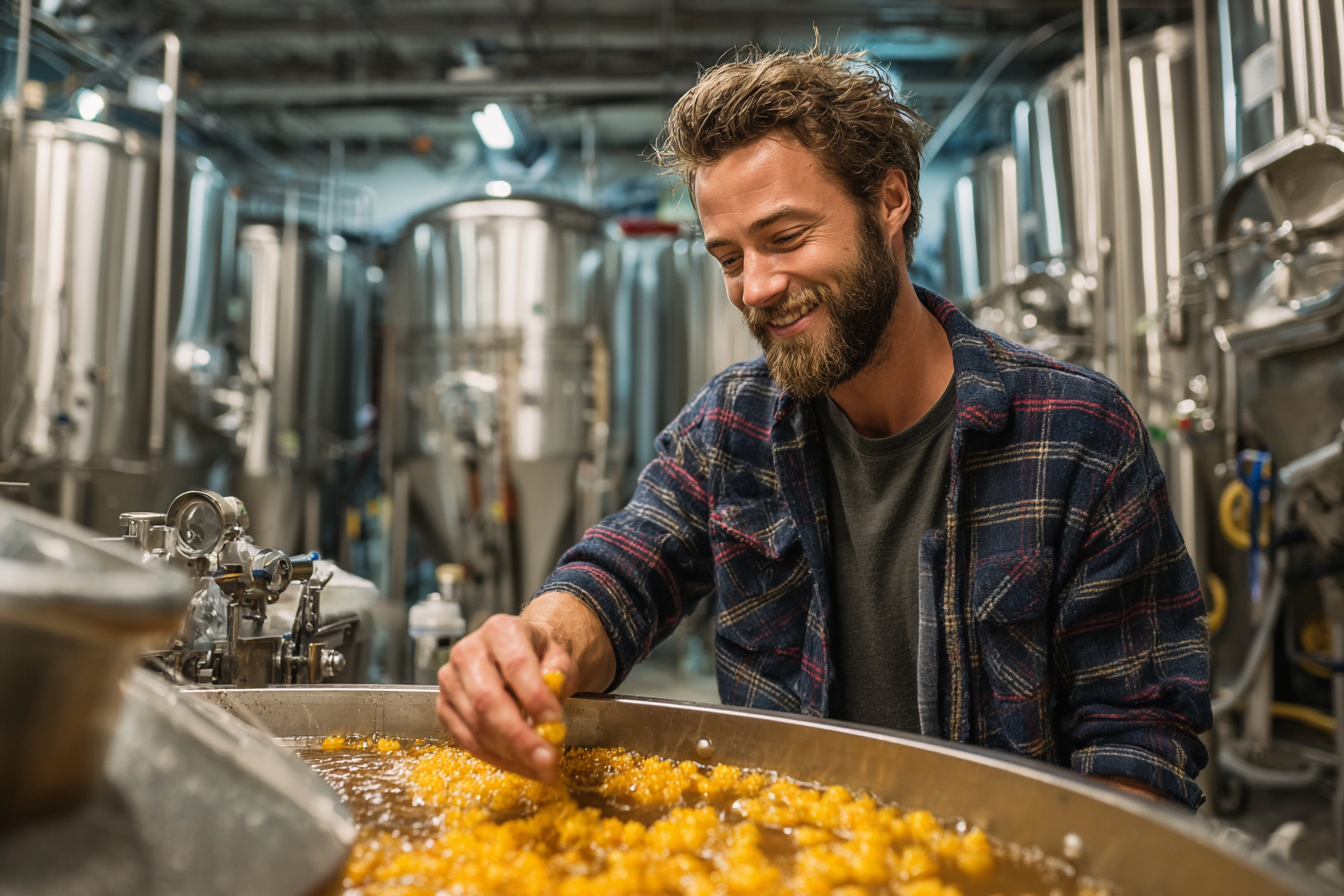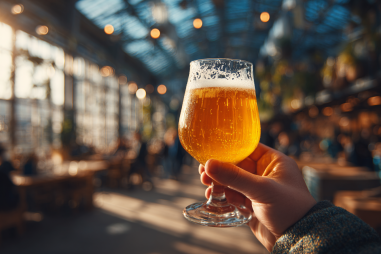Brewing a Fruit IPA is a rewarding journey that combines the hoppy bitterness of an India Pale Ale with the refreshing vibrancy of fruit flavors. Successfully mastering this style requires not only a solid grasp of brewing fundamentals but also an understanding of how to integrate fruit in a way that enhances, rather than overwhelms, the beer’s character. In this guide, we’ll walk through every step of the fruit IPA brewing process, from selecting ingredients to packaging your finished brew, so you can confidently craft a bright, balanced, and flavorful beer.
Overview of Fruit IPA Style
The Fruit IPA is a delightful hybrid in the craft beer world, marrying the bold hop profiles typical of IPAs with the bright, sweet, and sometimes tart notes that fruit additions bring. Unlike some fruit beers that lean heavily on sweetness, a well-brewed Fruit IPA maintains the signature bitterness and aromatic complexity of an IPA, allowing the fruit to complement rather than dominate. Brewers often choose fruits that enhance tropical, citrus, or berry notes that naturally harmonize with hop varieties, creating layers of flavor that evolve with each sip.
Ingredients Needed for Brewing
Ingredients for a Fruit IPA generally follow those of a standard IPA, with the addition of fresh or processed fruit. Here’s what you’ll need:
- Malted Barley: Pale malt serves as the base, providing fermentable sugars and a subtle malt backbone. Some brewers add specialty malts like Caramel or Munich to add body and complexity.
- Hops: Varieties such as Citra, Mosaic, Galaxy, and Amarillo are popular for their bright, citrusy, and tropical fruit aromas that complement real fruit additions.
- Yeast: An American ale yeast or a clean fermenting strain that highlights hop and fruit character without masking them.
- Fruit: Choices vary widely—from raspberries, mangoes, and passion fruit to peaches and blueberries. Fresh, frozen, or pureed fruit all have their place depending on availability and brewing style.
- Water: Water chemistry should be balanced to accentuate hop bitterness while maintaining smoothness.
- Additional Adjuncts (Optional): Peels, zest, or fruit extracts can be used to enhance aroma or flavor subtly.
Detailed Brewing Steps from Mash to Boil
The brewing process begins with creating a wort that balances malt sweetness and hop bitterness, setting the stage for the fruit. Here’s a breakdown:
- Mash: Begin by mashing your grains at around 152-154°F (67-68°C) to achieve a medium body and good fermentability. This temperature range helps support a beer that’s balanced in sweetness but not too heavy, allowing fruit notes to shine.
- Lauter and Sparge: After mashing, rinse the grains to collect sugars in the wort.
- Boil: Boil the wort for 60 minutes, adding hops at scheduled intervals to layer bitterness, flavor, and aroma. The bulk of bittering hops go in early; later additions (last 10-15 minutes and flameout) provide aroma and flavor.
- Cooling: After the boil, cool the wort rapidly to yeast pitching temperature (around 65-70°F or 18-21°C).
When and How to Add Fruit During Brewing
Choosing the right time and method for adding fruit is critical to maximize flavor and minimize unwanted fermentation byproducts or off-flavors. Common approaches include:
- Secondary Fermentation: Adding fruit during secondary fermentation is the most popular method. This process preserves fresh fruit aromas and flavors better and reduces the risk of fermentation issues from additional sugars. The fruit can be added as fresh, frozen, pureed, or juiced, typically sanitized by freezing or pasteurization before adding.
- During Primary Fermentation: Some brewers add fruit early to encourage yeast to ferment the sugars. However, this may lead to diminished fruit aroma and volatile flavor loss due to CO₂ scrubbing during active fermentation.
- At Packaging: Another technique is adding fruit or fruit extracts just before bottling or kegging, which maximizes aroma but requires caution to avoid contamination or overcarbonation.
When adding fruit, it’s essential to sanitize your additions properly. Freezing fruit is a simple and effective way to kill wild yeasts and bacteria without compromising flavor. Pureeing or mashing can also increase surface area and extraction of flavors but may need to be balanced with filtration or settling time to maintain clarity.
Fermentation Specifics for Fruit IPAs
Fermentation in Fruit IPAs demands attention to several factors given the added complexity of fruit sugars and potential microbes:
- Yeast Selection: Use a clean-fermenting ale yeast strain that allows both hop bitterness and fruit aromas to come through clearly.
- Temperature Control: Maintain a consistent temperature range suitable for your yeast to prevent off-flavors and encourage a clean profile. Typically 65-70°F (18-21°C) works well.
- Monitoring Fermentation: Fruit additions can restart or extend fermentation due to extra sugars. Keep an eye on gravity readings and consider stabilizing with potassium sorbate or sulfites if needed before packaging to prevent overcarbonation.
Tips for Maintaining Flavor Clarity
While fruit provides beautiful aroma and taste, it can also introduce haze or sediment that affects the beer’s appearance and mouthfeel. Here are some tips to maintain clarity without sacrificing fruit character:
- Cold Crash: Cooling the beer near fermentation’s end helps yeast and fruit particles settle out before packaging.
- Use Fining Agents: Add substances like gelatin, isinglass, or biofine during conditioning to clarify the beer naturally.
- Fruit Preparation: Strain purees or juice to remove pulp and seeds before adding.
- Filtration: If equipment allows, light filtration can polish the final beer.
Packaging and Aging Considerations
Packaging a Fruit IPA correctly ensures optimal flavor retention and shelf life. Keep these points in mind:
- Bottling vs. Kegging: Kegging offers more control over carbonation and minimizes oxygen exposure, which preserves delicate fruit aromas. Bottling requires careful priming sugar calculation and sanitation.
- Carbonation: Aim for moderate carbonation (2.3-2.7 volumes CO₂) to enhance refreshment but not overwhelm the beer’s delicate flavors.
- Oxygen Exposure: Minimize oxygen at packaging to prevent stale flavors and oxidative deterioration of fruit elements.
- Aging: Fruit IPAs are best consumed fresh — typically within a few weeks to a couple of months. Extended aging can dull hop and fruit vibrancy.
Crafting Your Best Fruit IPA
Brewing a Fruit IPA is both a science and an art. Beyond the technical steps, trusting your palate and experimenting with different fruit varieties, hop combinations, and fermentation approaches will help you develop a unique and satisfying brew. Some expert tips to keep in mind:
- Start with small test batches when trying new fruits to gauge flavor impact and fermentation behavior.
- Balance is key — ensure that fruit additions complement the IPA’s natural bitterness, not overpower it.
- Consider layered additions, such as hops during the boil and fruit in secondary, to build complexity.
- Keep detailed notes on each brew so you can replicate successes or adjust future batches.
With patience and practice, your Fruit IPA can become a show-stopping brew that excites both your taste buds and those of fellow beer lovers.







